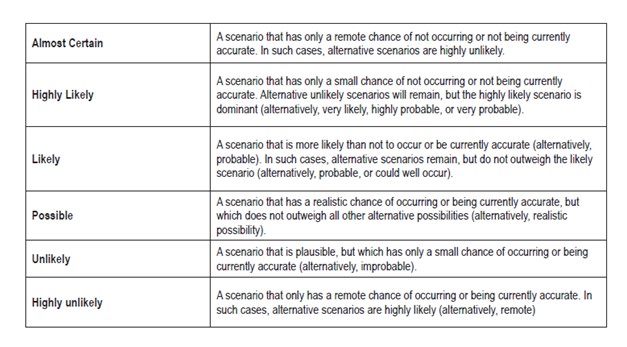Author/s: Combined Threat Assessment Group (CTAG)
Published in National Security Journal, 27 November 2020
Assessment of intent and capability has been the common approach towards threat assessment since David Singer formalised the practice within academic literature in his 1958 analysis of the armament-tensions dilemma2. Singer identified that states perceive the extent of a threat through the assessment of their adversaries estimated intent and estimated capability. Since Singer’s intent-capability threat assessment matrix was developed, academics and security practitioners have applied and integrated this approach to a range of industries, from psychology to law enforcement.3 While there have been different threat assessment frameworks to address specific threats, the core focus of these remain on understanding the intent and capability of actors to better assess the likelihood of the threat manifesting.
Communicating the likelihood of an event manifesting
When assessing the likelihood of a terrorist attack occurring, threat analysts make predictions about whether a future event will or will not occur. Future predictions involve an inevitable degree of uncertainty due to the range of alternative events that could also occur. When making anticipatory judgements, such as threat assessments, analysts use probabilistic language – a set of qualitative terms that express estimations of likelihood. Probabilistic language aids with communicating the degree of uncertainty within assessments, acknowledging how alternative scenarios compare and are supported by the information currently available. In general terms, the more likely an event is assessed to occur, the less likely the alternative scenarios are.
Figure 2: Guidance on what probabilistic, qualitative terms can mean
